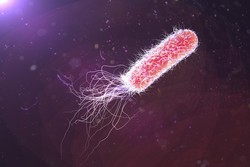Receptors in host-pathogen interactions
Host-pathogen interaction is in part mediated by small-molecule signalling. However, there is a big gap in knowledge regarding the sensors of these signalling events and the downstream transduction pathways. A better understanding of microbial virulence and the complexities operating at the host-pathogen interface is essential for designing novel antimicrobial strategies. Dynorphin (DYN) is an important stress-related peptide hormone that binds opioid receptors in humans, and induces virulence in the opportunistic bacterial pathogen, Pseudomonas aeruginosa (PAO). The scope of the EU-funded CHEMICALCROSSTALK (Chemical crosstalk: targets of interkingdom signals at the host-pathogen interface) project was to understand this interaction at the molecular level and identify potential receptors for DYN in PAO that could mediate this phenotype. Towards this goal, researchers performed chemical proteomics studies to capture the binding partners of DYN. For this purpose, they synthesised novel DYN-mimetic probes and explored the structure-activity relationships of approximately 30 compounds in live bacteria. Most of the DYN probes interacted with the lipopolysaccharide (LPS) molecules and other membrane proteins, including a putative sensor kinase, in PAO. In another part of the project, the scientists investigated the outcome of DYN treatment on bacterial biology and virulence. Proteome analysis unveiled changes in specific secondary metabolic pathways and proteins involved in LPS modification. Collectively, the CHEMICALCROSSTALK data suggested that DYN might trigger a response in PAO similar to antimicrobial peptides and could thus serve as a signal for host-PAO interactions. Overall, the chemical proteomics approach employed in the study could be further exploited towards the elucidation of host-pathogen interactions.







